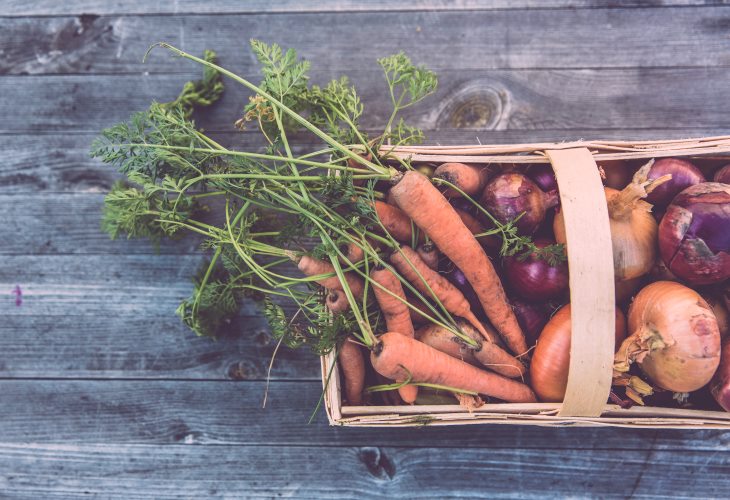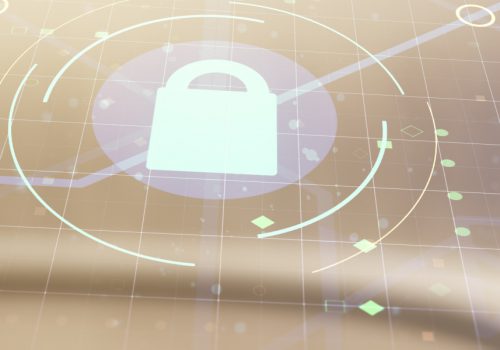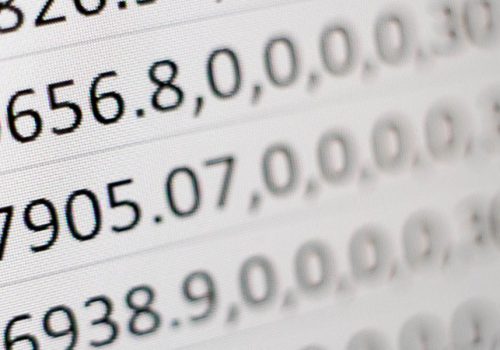Smart farming expert Angela Schuster reveals some of the ways that digitalization is transforming agriculture and helping feed the planet.
One of the goals of smart farming is to make better use of the land and improve yields as a first step in solving world hunger, but what other advantages can smart farming bring compared to a conventional approach?
Angela: Smart farming is certainly a leading enabler in producing more food with less for an increasing world population. In particular, smart farming enables increased yield through more efficient use of natural resources and inputs, and improved land and environmental management.
While this is crucial to sustainably feeding the world’s growing population, there are other benefits that smart farming provides farmers and communities all around the world.
Conventional supply chains have been characterized by a power imbalance with farmers often having less power because they’ve had less information about how their product performs relative to customer requirements. Smart farming provides a vital link between all players in the supply chain by enabling the efficient and equitable flow of information and in doing so, facilitating better decision making. This has the potential to rebalance power and redistribute profits more equitably throughout the supply chain.
For example, if a farmer receives timely feedback about their product from various parts of the supply chain (such as processors and consumers), they can identify opportunities to change their production system to meet the needs of their customers, thereby increasing the value of their product. Meeting the evolving needs of customers is crucial to farming businesses remaining sustainable into the future and smart farming can provide insights to allow this to happen.
Smart farming also supports verification activities, by connecting information through the supply chain so that production claims can be checked. These may relate to the safety of the food produced (such as making sure that no harmful chemical residues are present), where it was grown, treatment of animals on-farm, or sustainability practices that help protect the environment (such as reducing GHG emissions). Smart farming helps farmers to better understand the important factors such as water, topography, aspect, vegetation and soil types. This allows farmers to determine the best uses of scarce resources within their production environment and manage these in an environmentally and economically sustainable manner. It also enables farmers to monitor the quantity and quality of their products in a timely manner and to adjust their production techniques when necessary.
For example, satellite imagery can be analysed to determine crop and pasture health using the “normalized difference vegetation index”, or to detect pests and diseases earlier than with manual monitoring techniques. By having additional data, the farmer in both examples is able to implement timely and targeted strategies to prevent production losses and increased costs. That protects their livelihood, enables them to continue to supply food and other natural products to the general population, and improves environmental management.
How is automation transforming agriculture? How will it impact jobs on farms and rural economies?
Angela: Automation is changing the ways that farmers make decisions on-farm. They have greater insight into the potential opportunities, challenges and constraints. Farmers can also be more efficient and innovative in their approach, growing more with less. From an economic perspective, automation really means farmers can reduce costs, time and waste which translates to greater profit margins and more efficient resource use.
Automation is also changing the types of job and how jobs are done on farms. A different skill set is required to understand and use smart farming technology. Learning new skills empowers industry participants more broadly and attracts new people who may not have previously considered a career in farming. Conversely, smart farming can also reduce the complexity of skills required.
Variable-rate sowing and fertilizer application utilizing smart farming solutions is an excellent example of this. It involves software systems to automatically adjust sowing or fertilizer rates as a tractor travels along according to mapped soil types reflecting soil fertility, salinity, soil moisture and other parameters. In some cases, adjustment to rates can be “live” – based on real time satellite imagery – or based on historical distributions seen on digital maps. Variable rate fertilizer application has the potential to profoundly influence input use and product quality through the precise manipulation of macro- and micro-nutrients to meet the specific needs of plants grown in different environments.
In this case, the tractor operator needs to understand the software and operation of the machinery, be able to read and interpret the information, to monitor application as the tractor progresses through the field and make adjustments as required. Of course, the operator may or may not even be in the tractor at all, and that can mean they are able to perform other jobs while monitoring.
In a similar way, irrigated systems that utilize smart farming solutions can integrate variable water rate delivery systems with soil moisture probes so that crops are only irrigated when and where they need it, delivering substantial benefits for both water use and yield. Similar technology can be used in dryland farming systems, as operators gain a better understanding of the soil moisture profile to assist decision making particularly with respect to sowing, yield potential and the application of fertilizer. Operators need to understand the results from the soil moisture probes and the ramifications on water delivery and other considerations. They also need to be able to monitor and check the system and interpret what is being reported or is happening and make corrections or changes as required.
Automation may present challenges to some farmers who can find adapting to the technology daunting. This means technology providers need to make their technology easy to use and intuitive to achieve broad adoption.

Smart farming solutions like robots, sensors and connected machinery are usually expensive. How can smart farming work for the majority of the world’s farmers, who are smallholders working with basic tools on small plots of land?
Angela: There is typically a cost associated with accessing smart farming solutions, but in most cases the cost depends on the scope and scale of the smart farming technology being utilized. If you look beyond hardware as “smart farming” and also consider data, and data sharing, as smart farming, then there are cost effective and accessible applications that can be very useful for small holders.
Weather forecasting via smart phone apps is not something people may automatically associate with smart farming but it can have a profound effect on decision making by farmers. This can include weather radars and severe event warnings, for example flood or storm forecasting that can provide small holders with enough time to move herds to high ground, or to protect or harvest their crop.
Smart phones can also be used to warn farmers of biosecurity risks. Consider a small holder of goats who receives notification of a potential disease outbreak in her area via smart phone: she can decide to stop grazing a common area rather than take the risk of infecting her herd. This technology can also be used to enhance trade options for the same small holder. Imagine she has six litres of goat’s milk to sell today. If she can send notifications to three potential buyers of this milk, they can bid for her product and she can select to sell to the highest bidder. Greater access to markets can be significantly transformational for small holders.
Whether it be responding to weather forecasts, marketing product or responding to a disease outbreak, these are all examples of smart farming solutions helping small holders. Another opportunity for small holders to access smart farming is via collective investment in technology solutions, perhaps with government support. Suppliers of smart farming solutions may also provide alternative options to make technology more accessible such on pay-as-you-go arrangements or equipment rental.
What are the most-visible applications of smart farming in agriculture? What changes, if any, will consumers see on their tables?
Angela: To be fair, consumers won’t always necessarily “see” the application of smart farming. What will be more apparent to them is the link between what they are purchasing and where and how it has been produced.
Smart farming has a significant role to play in verifying consumer-facing production and provenance claims. We’re seeing this on an increasing basis – consumers making purchasing decisions based on their preferences for products with food safety, sustainability, animal welfare and country of origin claims.
All of these claims require traceability as the backbone and smart farming technology underpins most traceability systems. Other smart farming applications also contribute to verification of these claims. There are also examples where consumers can see and hear from the farmer, with fridges that play videos conveying the “farm to fork” story at the point of sale for products such as meat and milk.
How can standards support climate-smart agriculture? How will the ISO Smart Farming Strategic Advisory Group (to which you contribute) and its intended smart farming roadmap make this a reality?
Angela: Agriculture is under increasing pressure to produce food in a more climate-friendly way and for more people globally. This means agriculture is under real pressure to improve efficiency and produce more with less. Smart farming has the potential to assist farmers with this task by
- enabling optimization of resource use and efficient food production,
- providing connectivity along the entire supply chain, from farm to fork and everything in between, and
- assisting in the implementation, monitoring and reporting of political strategies such as the UN Sustainable Development Goals.
The main reason this potential has not yet been realized is not because the technology and ideas don’t exist, but rather that there has been a lack of coordination and cohesion in how these technologies integrate to facilitate data transfer. The standardization of digital technologies, from data collection, formats and interfaces, to the optimization and interconnectivity across the entire supply chain is required to realise the potential smart farming offers.
ISO has created the Strategic Advisory Group on Smart Farming (SAG-SF) to address this challenge. The first priority for the SAG is a Standardization Roadmap that will set the direction for International Standards in smart farming for many years to come and enable smart farming to deliver its huge potential.









